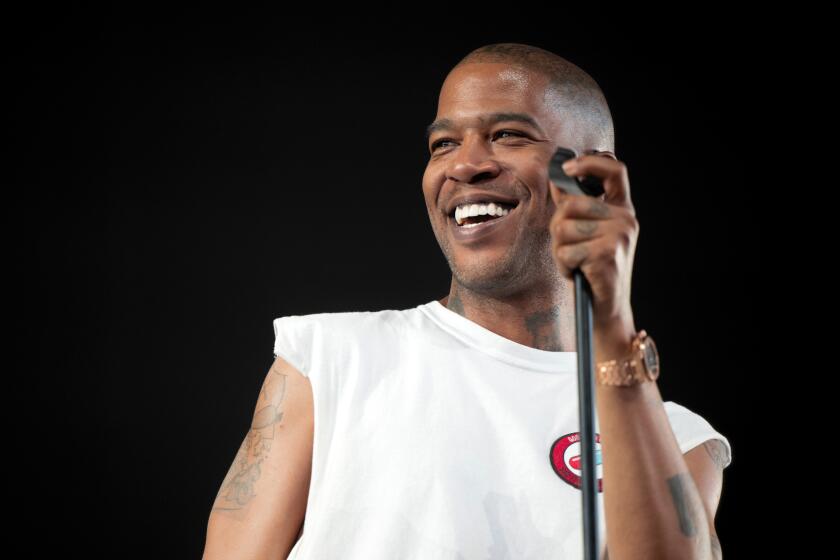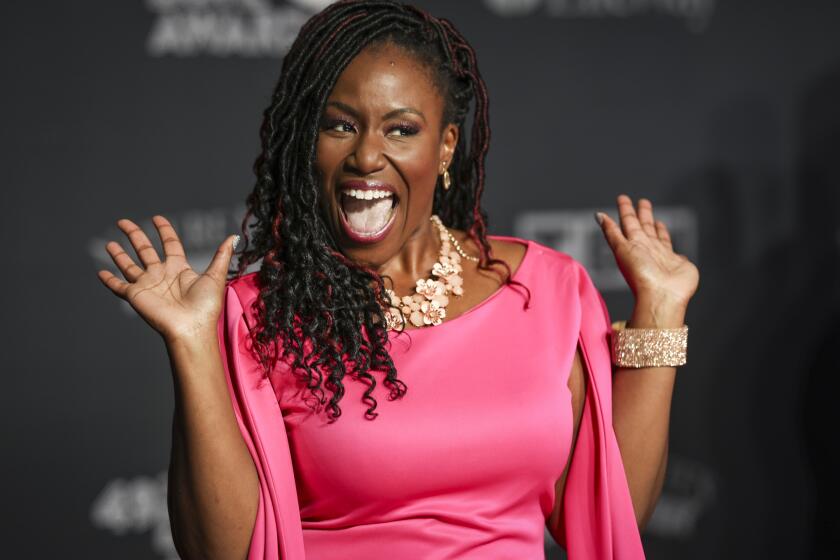On the Media: Tea party, Occupy Wall Street share a moment
You likely saw the quirky signs and heard some protesters talk about how they would just as soon disband the government. Then a reporter dutifully informed you that these people had gathered en masse but didn’t really know what they wanted. Some in the crowd sure looked silly, even a little crazy.
That’s the likely conclusion one would gather in recent weeks from some media accounts of Occupy Wall Street and its many offspring protests. Oddly enough, you could have gotten the same take-away from coverage two and a half years ago of the early tea party rallies. And veteran activists from the 1960s recall reading over and over about their “bearded,” “sandal-wearing” selves. The unsubtle translation: They were dirty and shiftless, certainly not credible representatives of, well, anything.
The media have a history of getting mass social movements wrong. Some of that is by coldly calculated political intent, especially in these hyper-partisan times, some by the definition-defying nature of giant collectives, especially in their formative moments. Reporters want to know what these large and often-amorphous gatherings mean. Editors and producers want an instant take. And protest organizers crave the attention. They insist on their story being told, even as they’re arguing about just what the story should be.
“This is not covering City Hall or an organized association,” said Todd Gitlin, a Columbia University journalism professor who has written a lot about coverage of the 1960s protest movements. “Journalists should know what kind of a thing this is. These movements are a real phenomenon, and there is a long history of them, not to be understood as mere flakiness or finding the most photogenic person who joined the group.”
A determined liberal, Gitlin acknowledges how some coverage in 2009 marginalized the mass of people who turned out for tea party rallies. Republican groups supported the movement, Gitlin said, “but that didn’t mean they were just a tool of the Koch brothers, or a concoction of these billionaires.”
Part of the problem then, as today, is that the yelpers and showboats who fill cable television have become the most memorable arbiters, even the would-be leaders, of these movements. If they’re not pushing themselves forward as virtual co-sponsors, they’re setting down markers as the permanent opposition.
Fox News shamelessly promoted the 2009 tea party rallies on tax day, both before and afterward, while MSNBC personalities mocked the same events as a gross misappropriation (a.k.a., “AstroTurf”) of real grass-roots action. Today the roles have been reversed. Ed Schultz and company at MSNBC have embraced Occupy Wall Street, while Fox had a new-found disdain for public displays of disaffection. What could we possibly learn from protesters who don’t mind their manners?
The kind of demonization and trivialization that can greet anyone daring enough to take his or her political beliefs outside the living room can be encapsulated in two made-for-cable-TV moments:
On the biggest day of tea party rallies in 2009, Rachel Maddow became nearly giddy mocking the anti-tax, anti-government movement. She obsessed on the nuttiest conspiracies spelled out on protest placards: President Obama is the new Hitler. He’s a Kenyan. She repeated, again and again, the sexually-suggestive term derived by turning the protesters’ proclivity for wearing tea bags into a verb. The whole movement was held captive, by Maddow’s reckoning, by “high-powered, corporate-funded, D.C. lobbyist-driven organizing.”
One day last week, the hosts of daytime’s “Fox & Friends” had a chance to turn the tables. They announced that the “No. 1 reason” protesters gathered in New York’s Zuccotti Park was “free food,” including smoked salmon. At $16 a pound! Anchors Steve Doocy and Gretchen Carlson concluded that other protesters were a) hiding out from the law b) demonstrating how to slip police handcuffs and c) taking lots and lots of drugs. An on-screen headline during the “Fox & Friends” segment declared: “Creepy Criminals Infiltrate Wall St. Protest.” This was not intended as satire.
The protesters understand, better than anyone, what’s going on here. Tea party activists complained that, if they sounded rational, some reporters would look for another protester, one who might call the president a Muslim. Gitlin noted in a recent essay that one Occupy Wall Street protester held a sign: “The press won’t interview me because I look too normal.”
I can’t say I am without sympathy for the many other reporters, with good intentions, trying to cover these stories. How do you adequately take the temperature of a crowd of hundreds, or even thousands? The challenge becomes even greater when a good portion of the conversation occurs on social media that are defined by a lack of hierarchy.
A couple of years ago, I decried the easy stereotyping that cable TV offered on tea party activism, suggesting real reporters should take a longer, closer look. Some did. But plenty did not. What are the dismissive thinking now, after the people in the silly tea-bag hats and Revolutionary War regalia helped drive a new Republican House majority and continue to set terms for the GOP presidential field?
As divergent as their world views may be, the tea party and Occupy movements share another bond. Both claimed at their conception that the media would not pay them any attention. I spent some time looking at the record, and it reflects that both got plenty of coverage, virtually from the get-go.
In fact, Tom Hayden, another veteran of ‘60s protests, told me that in his decades of activism, he’s never seen anything like this kind of media interest. Some of the coverage has been cynical, other stories less than certain, Hayden said. The latter he finds unsurprising.
“It’s like the mass media is in the delivery room, and these babies are just being born,” Hayden said. “I am saying, ‘Let it breathe. Just let it breathe.’”
Sometimes the most courageous story is the one that says: I haven’t seen this before. I’m not sure what it means. I don’t have a clue where it is going.
Twitter: latimesrainey
More to Read
The biggest entertainment stories
Get our big stories about Hollywood, film, television, music, arts, culture and more right in your inbox as soon as they publish.
You may occasionally receive promotional content from the Los Angeles Times.







